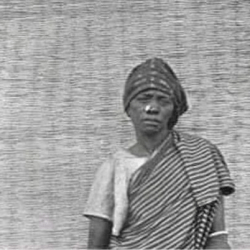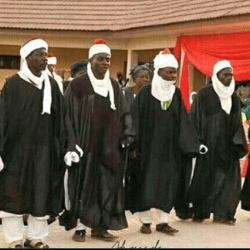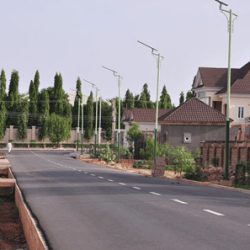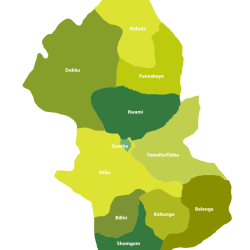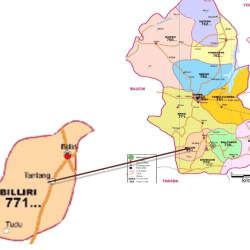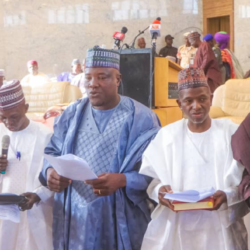Nyimalti (Yamaltu) was part of Akko District, its formation as Yamaltu District started since 1936 under the then Divisional Officer in charge of Gombe Division.

Nyimatli/Tera people are from the North Eastern part of Nigeria, we are mostly located in Yamaltu/Deba local government, Gombe State and Biu local government, Borno State.
Our tribe is rich with historical background and beautiful culture.
Njeba means ‘here now’ originated as a result of a statement made by one of the migrants from Bima Hill ‘Khami gha njeba!’ (Let’s stay here now!).

Deba was divided into the upper region clan and the second group of migrants from ‘Gewuidyi’ prior to 1368 when Kuji Pilbanmu, amalgamated them into a town.
District officer H.P Murray merged the other Nyimatli towns together with Deba town as the district headquarters. Kuji Manu Maji Buba was made the first district head in 1977.

Yamaltu/Deba local government Area council was created on 11th May, 1989.
It has its headquarters in Deba.
It has a population of 255,248 based on the 2006 census.
They engage in farming, poultry, weaving, trading, fishing, blacksmithing, and hunting. ‘Tundi marge’ (pap) and ‘Gin Shuba’ (Soup made with ash water instead of salt and garden egg) are our favorite food.
Ngwarda dance is full of elegance and prestige.
The names commonly used by the Nyimatlis are; Atuman, Ndola, Kuna, Mele, Kaku, Mungar, Kasha, Gawu, Pela Etc.
The then District Officer (DO) once wrote that Akko District has no historical right to the over lordship of yamaltu people for it is only within recent times that for the sake of administrative convenience the administrative arrangement and separation of these people has been artificial and has not been at all acceptable to them. A sprit of almost fanatical interdance is a characteristic of yamaltu. Mach village keeps well within its bounds. And each village head is extremely jealous of his autonomy’’.
The Do further stated that, ‘’Yamaltu people are an extremely intelligent and likable people and many are employed in Gombe Native Administrative in positions of importance and trust, their diligence and industry leaving their Fulani fellow workers for behind ‘’.
The re-organization of provincial Boundaries in 1926 saw the transfer of Gwani enclave comprising Hinna, Gwani, Shinga and Wade to Gombe from Biu Division of Borno Province. Gwani then had the status of a District Head but upon the creation of Yamaltu District on 15th may, 1950 and the subsequent appointment of Sarkin Gwani as the first District Head of Yamaltu District, the Colonial chose Dadin –Kowa ward in Hinna Village area as the new District Headquarters some village area protested the appointment of sarkin Gwani as the new District Head of Yamaltu District. For him to move from his home town Gwani to Hinna Village Area to0 operate as the District Head was objectionable to the people the arrangement ushered in confusion and series of protests. This paved way for the then Colonial Masters to declare that whenever vacancy exists, all the fourteen Village Heads of Yamaltu must be obliged to contest for the vacant stool.
In view of the above, it can be seen below that ascendency to the traditional stool of yamaltu has had almost equal representation from all the ruling houses.
According to legends, the Yamaltu people or Nyimalti migrated from Yemen in the Arabian Peninsula together with other tribes like the Babur, Jukun, Bolewa , Jara Margi, Tangle, Tula ,the Waja, the Kanuri, Ka Nakuru, and Karee Kaire amongst other in about the 8th century.
History has it that the reason for the mass migration from Yemen was due to breakage of the Ma ‘rib Dam which took place in about 720AD. The incident was said to have destroyed their farm produce, animas, houses and properties which caused drought all over the area. Coinciding with this disaster was the Islamic revolution that affected all the neighbouring state of Saudi Arabia.
The Nyimalti communities with their rich cultural heritage were said to have refused to submit to the Islamic evolutionist, so alongside other tribes they left Yemen. They sojourned through the route to lake Chad Basin to Burma on the Hawui River that joined the Gongola River Valley. Lather, they were said to have moved northwards and left some of their Kith and Kins at Ka Nakuru, Dali, Got, Gasi, Kwaya Tera, Wuyo, Balbiya and Shani to settle bat Shinga.
It was further gathered that they had sojourned through wokfiri, Njanina, Mr inga, Badalangi, Fika, Durfi, Zhimi, Zhindng (Fast of Gongola), Barebari, Ngazargamu, Walama and Shinga in Gombe.
It is interesting to note that while some settled on the way in course of the long journey, some proceeded in search of greener pasture for their livestock, farm land and possibly a habitable placed to practice their esteemed cultural heritage.
From Shinga, it was gathered that some Nyimalti group still dispersed, some moved eastwards and founded Wade, some went northwards and established Bage, Gwami, Kwami, Liji, Kwadon, Kwali, Difa, Kalshingi, Lubo, and Doho, while some moved southwards and established Deba, Kurba, Doho, Jagli,Kinafa,Zambuk, Panda and Pata.
Some of the Nyimalti tribes (mentioned earlier) came to the hill (Bima Hill), they climbed the hill through a cave to ascertain its safety.
And after they had inspected and ascertained that it was safe enough, they invited others ‘’enter ‘’ which translation means ‘’vima’’ in the Nyimatli language ‘’Dleng vima’’ meaning ‘’Mount Enter ‘’ became the name of the hill.
However, with the coming of other tribes, notably the Hausa, and other tribes to the land, who found it difficult to pronounce /v/, used /b/b as the first letter of the word, thus changed the name to Bima Hill.
First among the Nyimalti who went to Bima Hill were three brothers who later became the Chiefs of Kurba, Njeba (Deba) and Ghuna (Hinna) towns. here was, as far as can be ascertained, no paramount chief for the Nyimalti groups each Nyimalti group was independent of the other, but acknowledged their strong family ties, with certain family obligation between the groups. So each village remained self-contained units complete unto itself and acknowledge no over lord with the exception of the Emir of Gombe, descendant of their original conqueror. A spirit of almost fanatical independence was a characteristic of the Nyimalti tribe. This was so much so that the head of one village will not even spend a night in the village of another lest he thought to be subject to that chief.
Thought the Fulani have settled among them, whilst the Jukun and the Bolewa also have married from them, never the less,
The Nyimalti have remained the running class and have preserved their identity.
